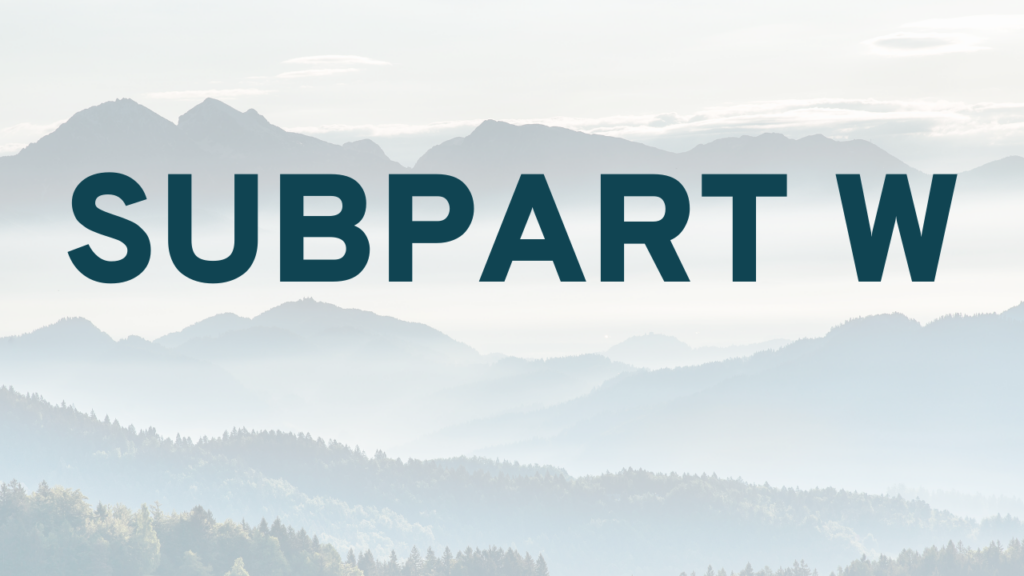On May 6, the Environmental Protection Agency (EPA) issued the final Subpart W greenhouse gas reporting requirements.
Revised emissions factors
The EPA is working to improve the accuracy of emissions data reported to the Greenhouse Gas Reporting Program (GHGRP). This involves changing emissions factors and calculation methods. These changes will incorporate additional empirical data and allow facility owners and operators to submit their own emissions data, helping to determine if charges are owed under CAA section 136 in the future.
The revisions also include new methods and reporting requirements for additional emissions sources, addressing gaps in methane emissions reporting for each facility under subpart W.
Why? New atmospheric data and analysis have identified major emissions sources not previously accounted for.
Additional sources
The final rule includes previously unreported sources such as large release events, nitrogen removal units, produced water tanks, mud degassing, and crankcase venting. It also mandates reporting from more industry segments for emissions sources like blowdown vent stacks and natural gas pneumatic device venting.
Site-level reporting
The EPA is finalizing updates to its reporting requirements to enhance data verification and transparency. These revisions aim to ensure more accurate emissions reporting.
Now, they’ll collect data from individual well pad sites and gathering and boosting sites for onshore production. This means greater granularity for reported emissions.
Mandatory reporting of “Other Large Release Events” (OLREs)
These are events not already accounted for under Subpart W (such as maintenance and emergencies) that are > 100 kg/hr methane instantaneous; or > 100 kg/hr methane greater than emissions calculated using Subpart W methodologies, excluding blowdowns.
This includes events detected by third parties under the new OOOOb Super Emitter Program (SEP).
According to Enverus, these revisions may lead to a significant increase in reported greenhouse gas emissions from the upstream and gathering sectors – likely seeing a 130% increase from 2021 reported methane emissions.
Meet Your Regulatory Experts
Project Canary is your one-stop shop for regulatory needs.
- Carbon Portal, our carbon accounting software, will organize and visualize site-level inventories with Subpart W reporting output.
- SENSE, our 24/7 monitoring platform, provides advanced alerting and localization to help you quickly catch and mitigate emissions events, minimizing impact of events on reporting. Plus, this also helps mitigate your PR risk under SEP.
New Subpart W rules will apply starting with the 2025 reporting year.
Contact us today to learn more and get prepared.


